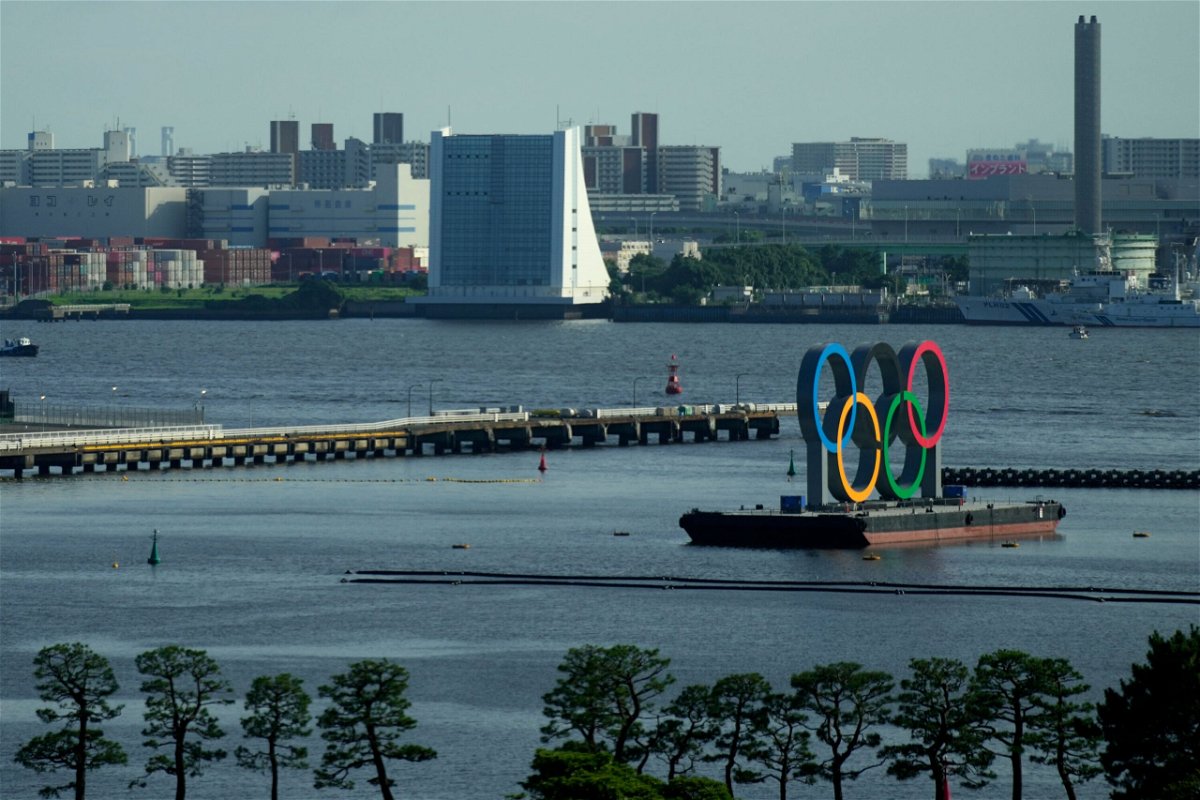Olympic athletes face high heat and a possible typhoon this week

By Jennifer Gray and Allison Chinchar, CNN meteorologists
Olympic athletes are the world’s best. They train hard in conditions that will be similar to what they will face at the games, to acclimate their bodies to the weather they will compete in. And this year, the weather is hot.
The Mei-Yu Baiu front — also known as the plum rains — reached Tokyo in late spring and lasts through July. In addition to heavy rain and flash flooding, this front can bring the hottest temperatures and most oppressive humidity of the year, from mid-July through August.
While the average high temperature in Tokyo during the Olympics is 86 to 88 degrees, it frequently experiences high temperatures in the mid-90s. In August 2020, temperatures in central Japan tied for a national record of 106 degrees during a scorching summer heat wave.
The July heat is compounded by high humidity. Dewpoints climb into the 70s this time of year, which is muggy and comparable to places like New Orleans and Miami.
For some athletes, like long-distance runners, the heat can be dangerous. But some are unfazed by the extreme weather. Gail Devers, a track and field athlete on Team USA, isn’t bothered by the heat.
“I’d want it hot and comfortable, because the hotter for me, the better it helps your muscles to warm up quicker,” she told CNN. Devers will be running the 100-meter hurdle and 100-meter sprint and says she’s just hoping it doesn’t rain.
In 2019, the International Olympics Committee acknowledged the potential for extreme heat in Tokyo by moving the marathon and other outdoor events 500 miles north to Sapporo, which can be as much as 40 degrees cooler. The average high temperature in Sapporo is in the upper 70s for this time of year, similar to Boston, Portland or Minneapolis.
But just like these US cities, Sapporo can have periodic heat waves.
“In 2019, Sapporo had a stretch in late July and early August where eight out of nine days topped 90 degrees,” said CNN meteorologist Taylor Ward.
Softball and soccer begin this week before the opening ceremony. Weather for the softball games played Wednesday and Thursday in Fukushima will be around 90 degrees, with mostly cloudy skies.
Soccer is played across multiple cities, including Tokyo and Sendai, which will experience temperatures several degrees above average. Tokyo’s normal high temperature this time of year is 84 degrees; the forecast for the opening ceremony is around 91 degrees.
Something else to watch for the early events: some forecasts predict a tropical cyclone could develop southeast of Japan mid-week. If those are correct, conditions along Japan’s east coast could begin to deteriorate as early as the weekend.
Tropical outlook
The Atlantic Ocean is relatively quiet, but soon will be headed into peak hurricane season.
One of the primary reasons for the lack of storm activity this week is a layer of Saharan dust which currently stretches from the eastern Atlantic Ocean all the way to the Gulf of Mexico. This layer of dust helps to limit the development of tropical systems.
However, the Atlantic is already ahead of schedule in terms of named storms. Hurricane Elsa, which made landfall earlier this month in Florida, was the fifth named storm of the season. Normally, the fifth named storm does not occur until August 31st.
The peak month for hurricane activity is September.
Seen from Space
Wildfires continue to rage across the western US, with active fires burning across 12 states.
The Bootleg Fire in Oregon grew to 300,000 acres Monday and prompted officials in Lake County to use its emergency alert system.The county warned residents in the Monument Rock area that they were at evacuation “level 2,” it said, and they “should be ready to leave at a moment’s notice.”
There were 80 large wildfires raging in 13 states across the US on Monday, burning more than 1 million acres. The majority of those fires were in the West.
Fires in California have already burned three times the area compared to this time last year, and humidity in some parts of the state is lower than it’s ever been. Smoke from these fires stretched from California to New York last week.
West drought update
The drought has expanded in the West where “rapid deteriorations” in conditions were seen, according to the US Drought Monitor. More than 94% of the West is in some level of drought, with more than two-thirds in extreme or exceptional drought — the two worst categories.
Six states are now entirely in drought conditions: Oregon, Idaho, California, Nevada, Utah and North Dakota.
The area in extreme and exceptional drought expanded more than 35,000 square miles in a single week — about the size of the state of Indiana.
Weather in focus
Monsoon rains across Arizona turned streets into rivers last week.
Taylor Landy took this video outside her home in Flagstaff on Wednesday. She said the rain only lasted about 30 minutes.
When soil is extremely dry, it doesn’t take much rain to trigger flash flooding to create scenes like these. Rain is unable to soak into drought-stricken ground — like water running off a dry sponge.
Weather number of the week
34,216
The number of wildfires that have burned in the US this year. This is nearly 4,000 more fires than normal for this time of year. They have consumed roughly 2.2 million acres, mostly in the West.
The-CNN-Wire
™ & © 2021 Cable News Network, Inc., a WarnerMedia Company. All rights reserved.
CNN’s Hannah Gard, Keith Allen, Joe Sutton and Susannah Cullinane contributed to this report.